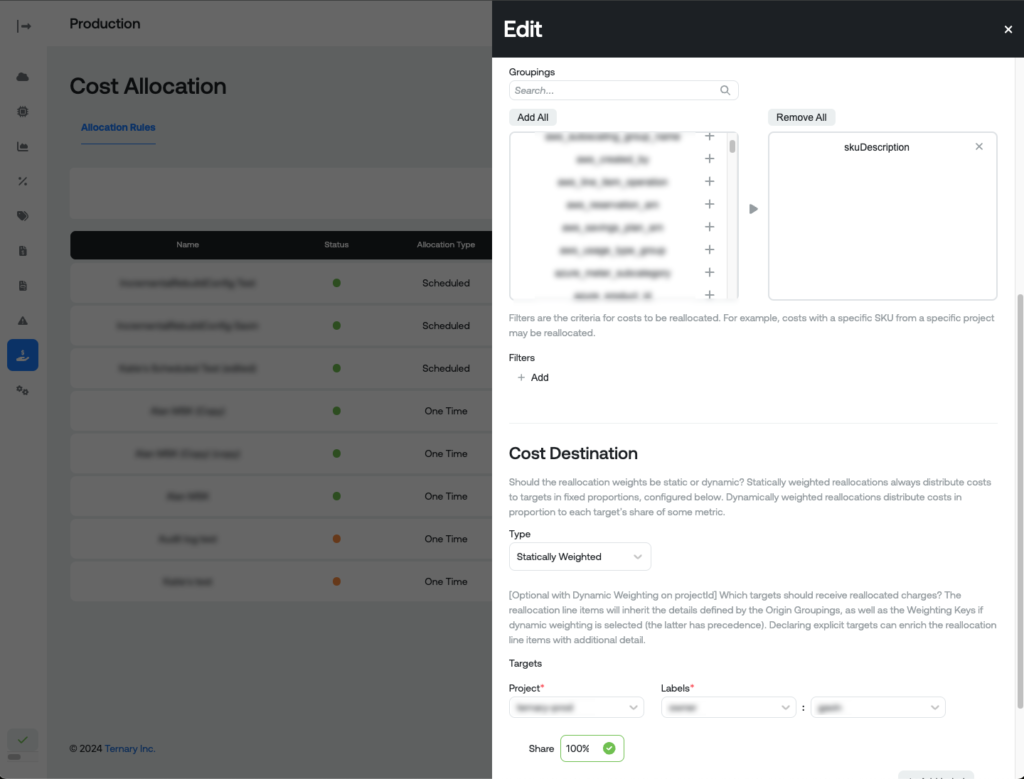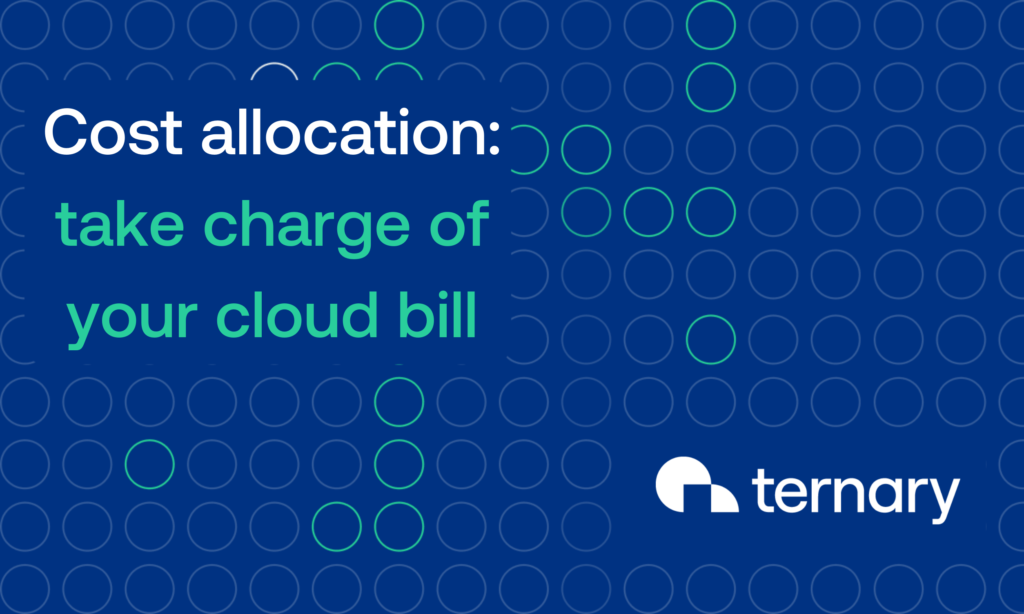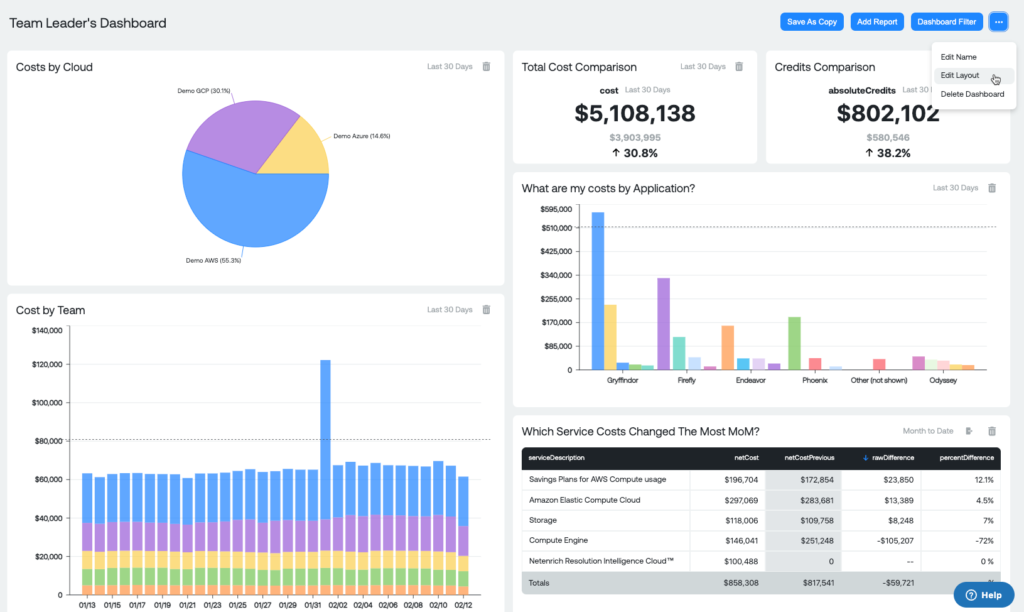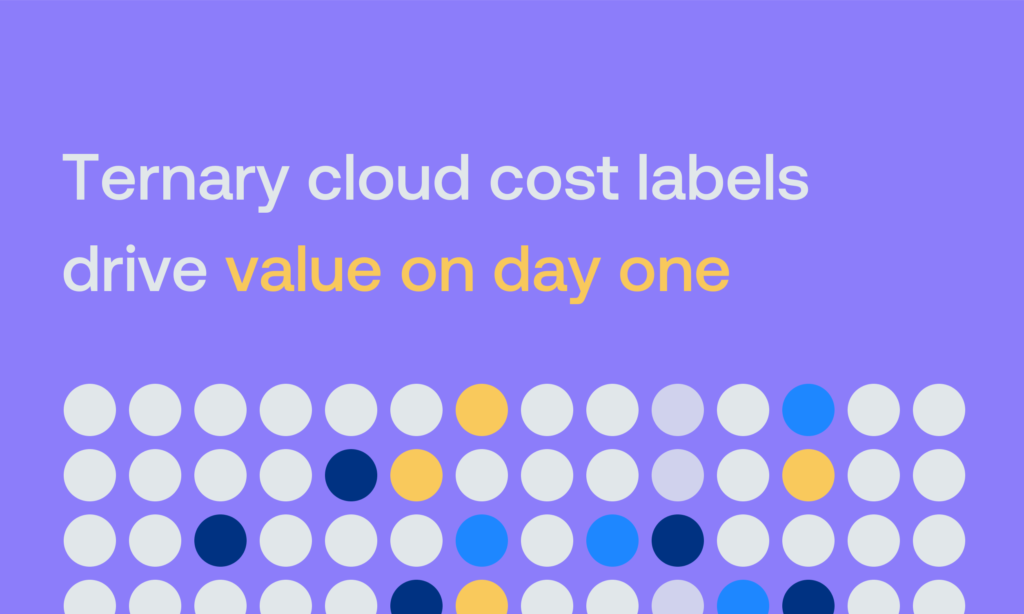The problem of cloud cost allocation recalls a familiar scene: a team dinner at an offsite restaurant.
As coworkers finish their meals, the bill arrives. It’s a smorgasbord of wines by the glass, shared appetizers, and main courses at myriad price points. One coworker suggests splitting it evenly. But someone who ordered a side salad shouldn’t pay the same as someone who ordered calamari with several glasses of high-end cabernet. How can your team divide the bill quickly and fairly, preserving the harmony this shared dinner was meant to foster?
The problem: making sense of dynamic, decentralized data
On their face, cloud services are like a million-course team dinner. Multiple business units may “order” cloud services on the fly, without consulting each other. Yet cloud service providers (CSPs) bill “for the table,” representing your teams’ combined usage. Such bills may comprise millions of data lines. Data may arrive several times a day, as business units flex their cloud usage up and down.
Amid that copious data, determining what each business unit contributed to the total bill is tricky and can feel awkward. (It’s the cloud equivalent of “Who ordered the calamari?”) It’s also time-consuming, distracting from the business’s core competencies.
Now consider that companies are increasingly multi-cloud, exponentially increasing the data involved in determining each business unit’s cloud costs. How can companies organize that multi-cloud motherlode to drive more efficient cloud investments and higher profits? Read on to see how Ternary’s FinOps platform helps solve this problem.
The solution: organizing cloud bills with cost allocation
The FinOps Foundation defines cost allocation—a key capability in a FinOps practice—as “dividing up consolidated Cloud Service Provider invoices among various IT groups who use cloud within the organization.” Then, using chargebacks or showbacks, teams can be held accountable for what they used and spent. In other words, it’s like getting separate checks instead of a shared bill. But instead of the waitstaff giving you grief for requesting them, they’re assumed to be part of the service. Even better, they’re delivered near-instantaneously. That way, everyone can see those costs as they go, rather than receiving one big bill at month’s end.
But cloud cost allocation does more than show who owes what: It provides a roadmap for decision-making. It allows you to see beyond how much compute and how much storage each team used. It also reveals what business activities are driving those costs. With a system for cost allocation in place, companies can focus on other FinOps priorities. These include managing anomalies, forecasting, and optimizing cloud investments for higher profits.
Cost allocation surfaces granular insights within bills
To demonstrate the full advantages of cost allocation, we offer a different metaphor: a typical energy bill. It informs you of the total you owe for the electricity your meter clocked over a given billing cycle. But cost allocation reveals how much energy each appliance or lamp used—and how that usage drove minute-by-minute costs. If you could leverage those insights (instead of being overwhelmed by them), you’d know just when to use the toaster, the dishwasher, or a particular lamp. You’d take advantage of peak efficiency to spend less.
Applying that analogy to cloud computing, you might distribute cloud workloads among three computers instead of one, if using three provided more efficient unit costs for a given cloud activity.
Now consider an AWS bill. Which part of the business is driving costs reflected there? Is a given line item tied to a revenue-generating priority or an operational expenditure? With answers to these questions, you’ll be better equipped to justify those costs to leadership.
CSPs know how crucial cost allocation is for businesses. So they now incorporate basic functionality like tagging and sorting data within their bill. But, as we’ll see, they can’t match the depth and breadth of Ternary’s solution.
Ternary delivers flexible, powerful multi-cloud cost allocation
Ternary customers can access the cost allocation feature from our “Cost Assist” navigation. From there, you can reassign charges from one business entity to another as conditions change.
You can also choose how detailed a view you want to see. You may opt for a 10,000-foot-view (e.g., CSP compute spend) or a “blades-of-grass” view (i.e., resource-level granularity). Compared with CSP-native tools, Ternary offers more opportunities to configure dashboards according to your specific reporting needs. And, because it can capture your entire multi-cloud spend (not just individual vendors), Ternary’s high-level reporting offers much greater context.

In addition, you can create a custom allocation rule and define when it runs (see the screenshot above). Consider the problem of shared cloud costs, like AWS Enterprise Support. It’s added to the central account bill at a flat rate: say, 10%. (That’s akin to a tax on an entire team dinner.) Should you split that 10% evenly? It would be more fair to cross-charge it to application groups, cost centers, or business units based on cloud resources they used.
Identifying the charges and the distribution method (fixed percentage or proportional), Ternary distributes those costs as new line items. That way, accounting team members can audit the original records at any time, and they can adjust the distribution as needed. They can then decide to treat those line items as showbacks or chargebacks to internal business units.
With Ternary, you can allocate savings as well as costs
Ternary also applies cost allocation to rate optimization (e.g., Amazon Reserved Instances or GCP Committed Use Discounts). In Ternary, you can dynamically distribute those discounts to your business units, taking advantage of savings where they’re most needed.
Most impactfully, Ternary allows you to approach cost allocation from a multi-cloud perspective. Our platform empowers customers to allocate cloud costs not just within a single CSP bill but among all your cloud bills, so you can leverage powerful optimizations across clouds.
A culture of accountability drives shared growth
Cost allocation is better than paying the team dinner bill quickly so everyone can go their separate ways. Instead, it creates a culture of accountability regarding what drives a company’s cloud costs. Armed with that knowledge, Finance, Engineering, and FinOps teams can collaborate to further business goals—and their sense of a shared mission.
Ternary’s new cost allocation engine is one of Ternary’s latest product releases to meet our customers’ evolving needs. Request a demo to see how cost allocation and our other features can improve your cloud financial management and deliver on your company’s promise.




